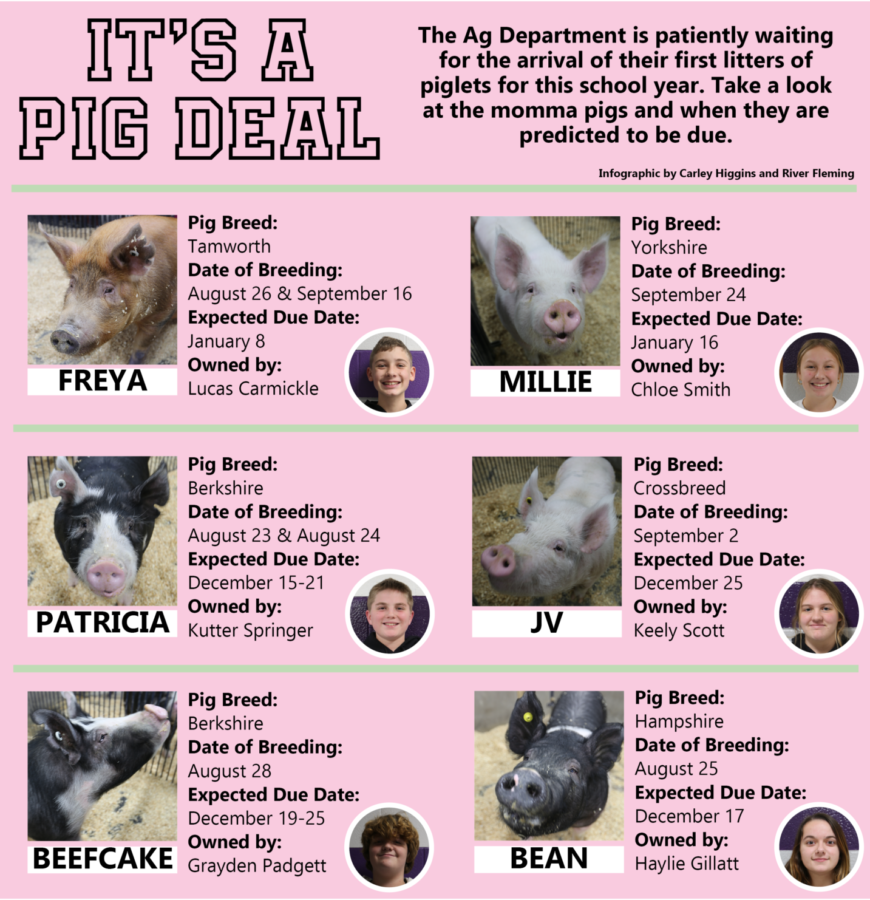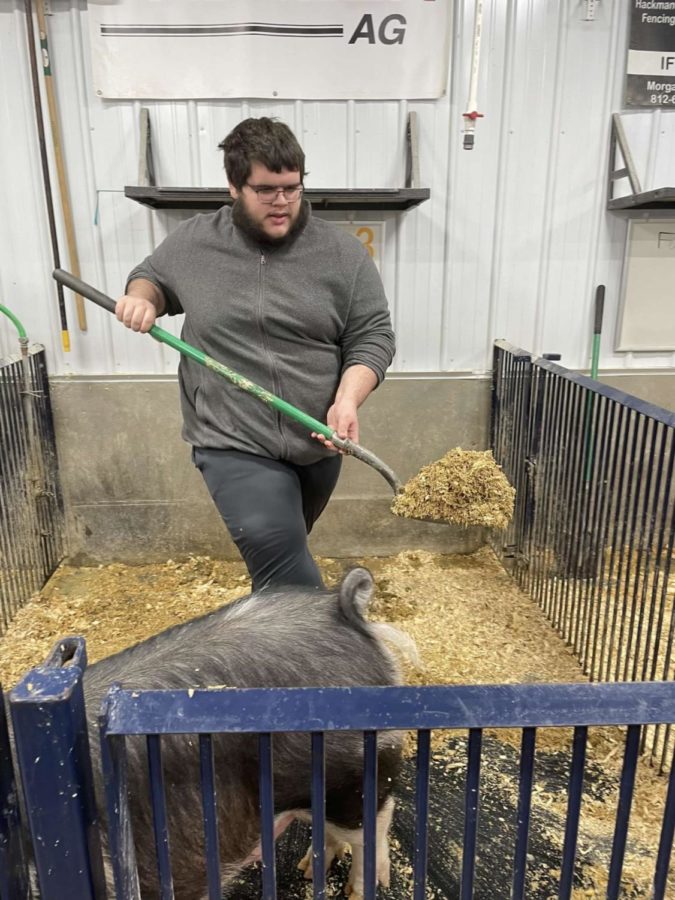Back in the Barn
From cultivating lettuce crops to inseminating pigs, students in the Animal Science and Plant and Soil Science classes have lent their hands towards bringing new life to PHS.
December 19, 2022
Piglets Wanted: Ag Awaits Farrows
It is almost time for the Dr. Bill McDonald Animal Science Pavilion to start expecting new additions to their pork population.
In the barn, there are currently six (hopefully) pregnant pigs — each of the pigs belonging to different owners. They were all bred via artificial insemination performed by Ag Teacher Cory Scott and students in his classes.
Five out of six of the pigs were bred using boars from the website Southern Gold Sires. The five that were bred using that website are Bean, Beefcake, JV, Millie and Patricia.
Freya, the final pig, was bred using a boar off of Shaffer’s Gold Rush website. Due to her individual breed, a different type of boar was needed for best chances of success and this website offered the best selection.
The majority of the pigs are thought to be due very soon, though Beefcake and Patricia do not have their exact due date estimated because of their breed. Berkshires like them tend to have a slightly longer gestation period. There is no way of telling when their actual due date will be until they have their first litter. Once the first litter is born, the mothers usually tend to be the same amount of days late in the next litter they will have.
This is a learning experience for students in Scott’s classes who have closely followed the pigs throughout their breeding and pregnancy periods. They will also be able to attend the birth of the babies when the time comes.
Though most of the Ag courses center on feeding and pen-cleaning duties for the livestock, there are a few students who do more.
Scott’s Veterinary Careers I classes also help administer vaccinations to the mom and baby pigs. Occasionally, Scott’s Veterinary Careers II students will help out as well, but they are often too busy working at nearby vet clinics.
The agricultural and veterinary pathway offers opportunities to students that are typically rare. If students continue on through Animal Science and Advanced Animal Science, they can take Veterinary Careers I, where they will be allowed to help and be hands-on with even more things. The following year they can take Veterinary Careers II, where they will be able to work at local veterinary clinics to get on-the-job experience. This will also help prepare the students for their Certification Exam for Level 1 Veterinary Assistant. Students cannot take this until after 200 hours of classroom instruction and 300 hours of clinic experience are completed.
Going Local for Lettuce
Towards the end of October, PHS students encountered a different type of lettuce on the lunch lines. This lettuce was planted, grown and harvested by the students in the Plant and Soil Science classes. In the Plant and Soil Science classes, students utilized the arc to grow the lettuce through hydroponic techniques. The arc is a three-tiered wooden structure where instead of soil, the plants gain their nutrients from the ones added to the water.
The classes are currently working on a production schedule. It takes five to six weeks to grow the lettuce as long as the nutrient levels and lighting requirements are met. Plant and Soil Science Teacher Kyle Woolston has helped his students produce lettuce for the school in prior years.
“The next batch of lettuce that students can expect on the serving lines will be in early December. We’re used as a supplement for what the school would normally order,” said Woolston.
All the profits raised go into a Farm-to-Table account. The money then goes back into the program for the use of buying seeds and materials. The amount of profit the program will be making this year is to be determined.
“We’re in negotiations at the moment. The quality of lettuce we were providing exceeded what the company was provided. We’ve been in negotiations with the company over pricing. Right now they are paying us the same price as the companies. It comes down to whether people are willing to pay more for higher quality,” said Woolston.
In previous years, any extra lettuce would be sold to the general public. Students can expect more types of locallygrown fresh produce on the lines in the near future.
“The lettuce was the starting point for our program because it’s an easier plant to grow and experiment with. We currently have spinach starts. We also plan on raising tomatoes and cucumbers. When talking about the tomatoes, we plan on introducing several different varieties to the program,” said Woolston.


